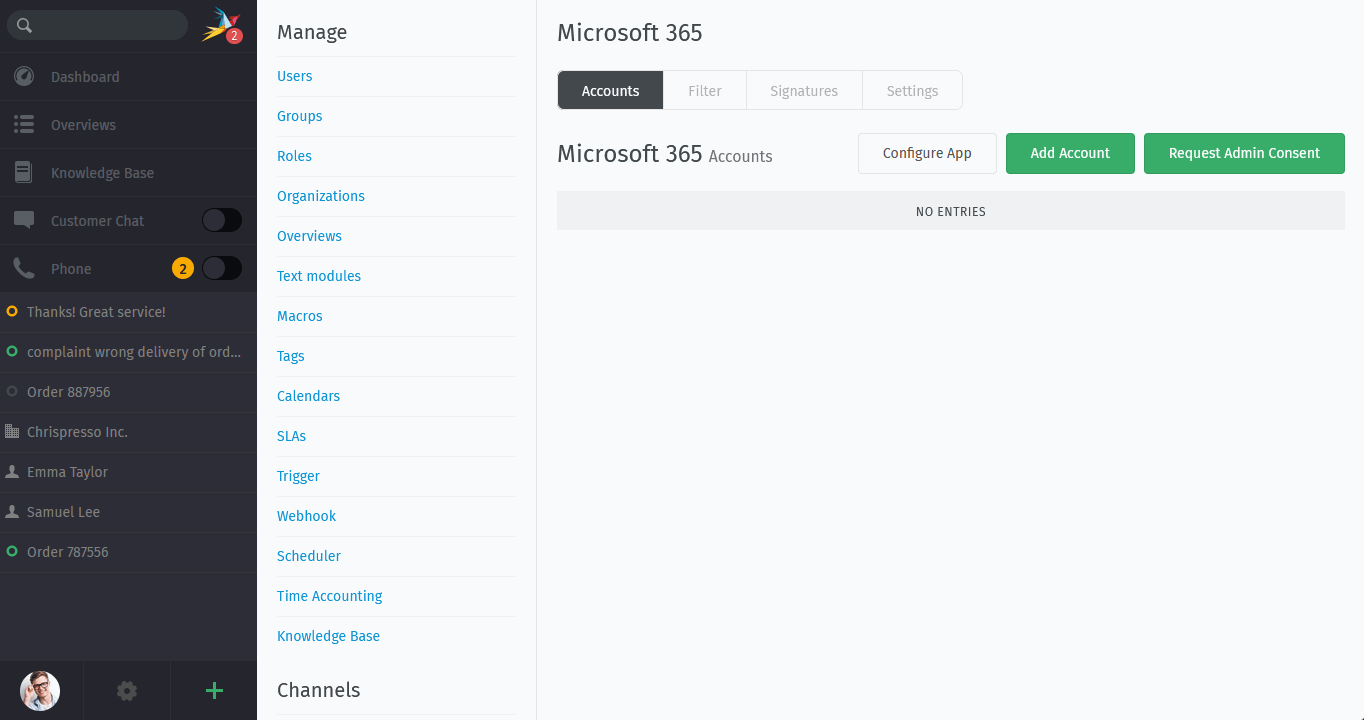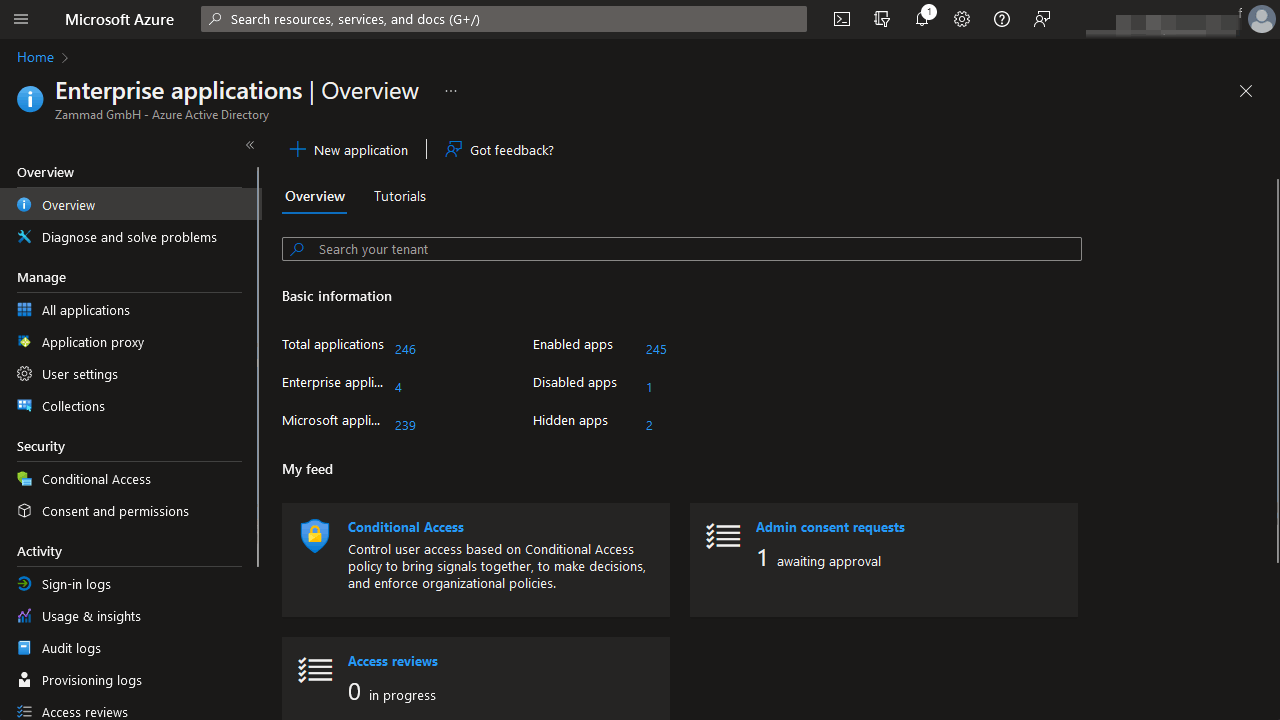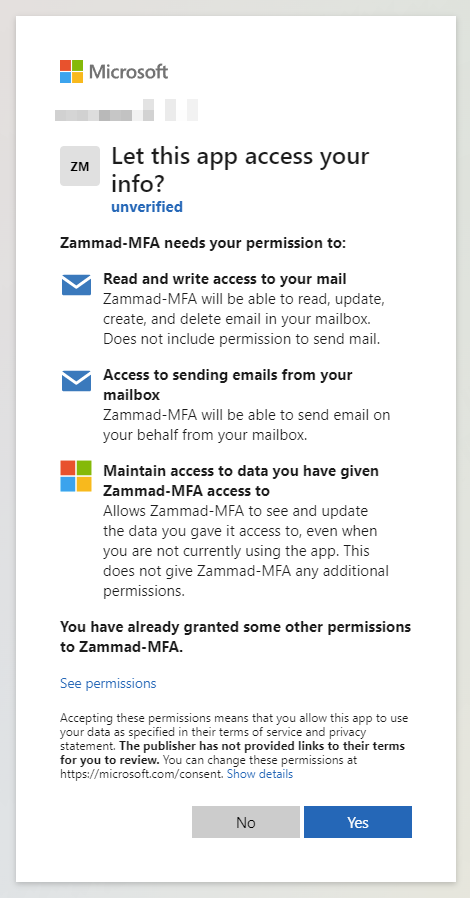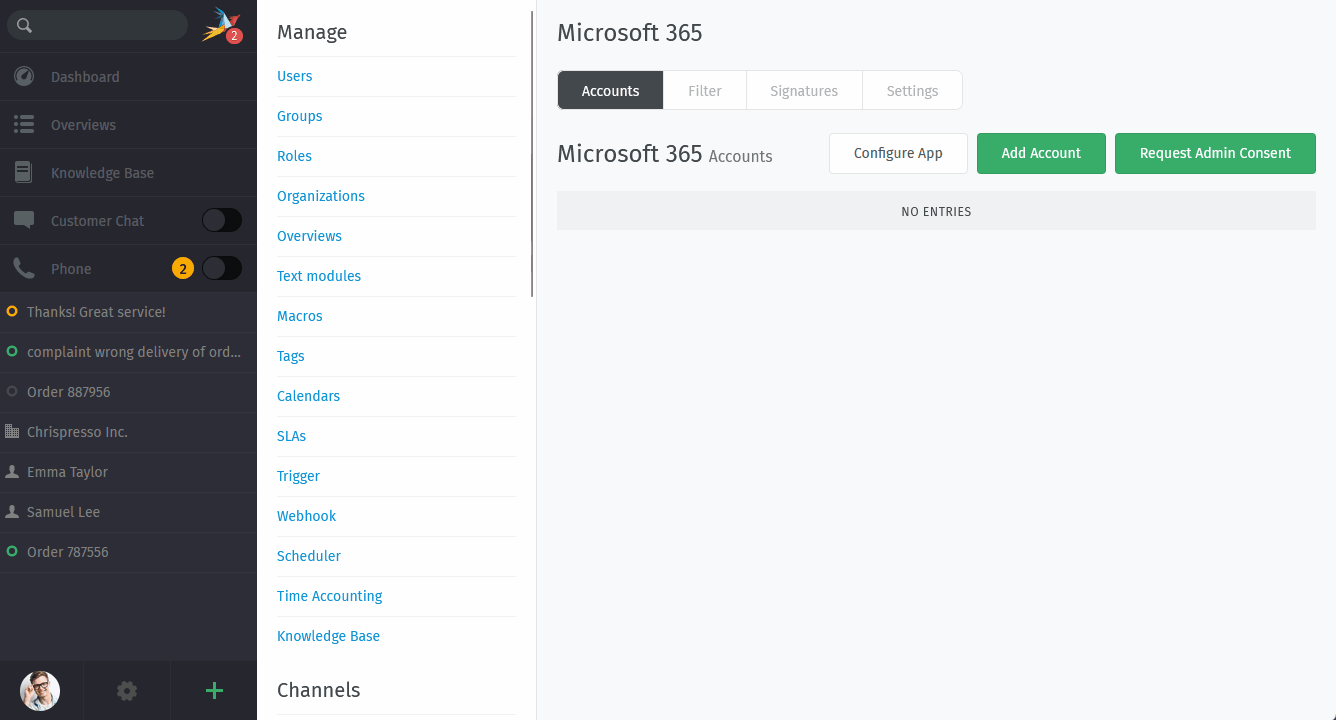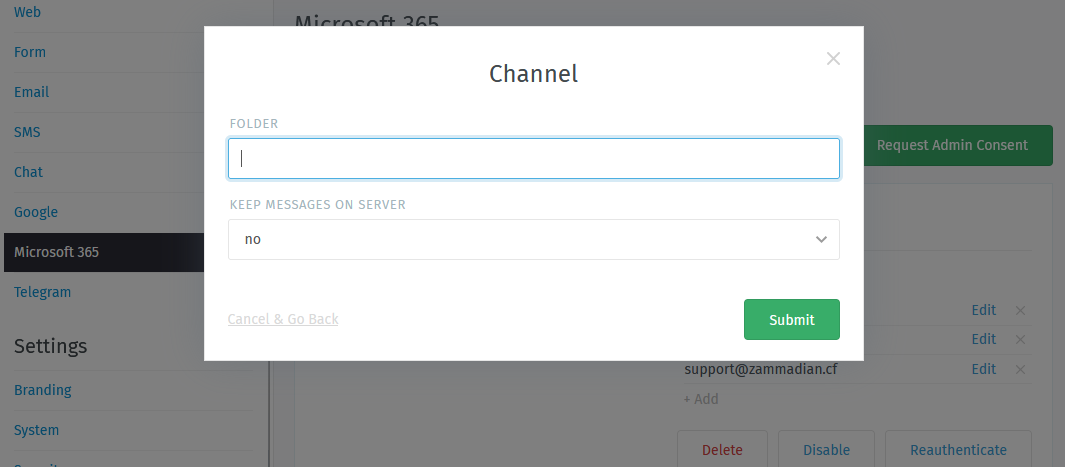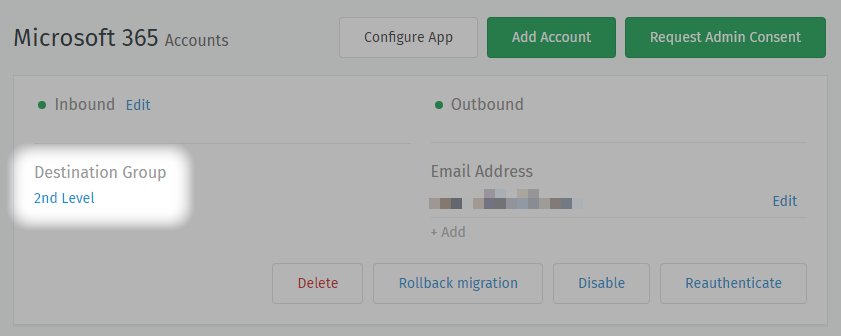Account Setup¶
After you’ve registered Zammad as an OAuth app in your Azure Portal, you can begin connecting Microsoft accounts to Zammad.
☠️ But first, a word of warning! The import process does things you might not expect:
Danger
By default, Zammad will delete all emails in your inbox during the import process. Use the Keep Messages on Server setting to disable this behavior.
Zammad will send an auto-reply message to every email it imports (including the old ones!). Make sure to disable this behavior prior adding an email account, and to turn it back on once all your messages have been imported.
Tip
🤓 Shared mailboxes are possible…
For this to function ensure to set a password for the account in question. You’ll need these credentials to authenticate against later during adding the account.
🚛 Migrate an Existing Email Channel¶
If you’ve already added your Microsoft 365 account as a regular email channel, you’ll have to convert it to a Microsoft 365 channel eventually: Microsoft is planning to end support for simple password authentication in third-party email clients (like Zammad).
Please refer the Migrate from Email channel to Microsoft 365 channel guide.
Requesting administrator consent¶
This step is only required if you didn’t consent the permissions in App registration as administrator on behalf of your users. If you do not use this kind of security measurement, simply skip to Add a New Account.
- Requesting the consent
Within Zammad click on Request Admin Consent in order to request consent from your administrators. This is required in some tenants.
If your admin already provided consent, you’ll be automatically authenticated, if this happens, continue with Add a New Account.
After authenticating against Microsoft and providing a reason for your request, you’ll be redirect to the Zammad app. Zammad will then tell you to wait for your administrators consent. The consent grant or denial will be sent by mail.
- Granting the consent (admin users)
Within Enterprise applications go to Admin consent requests. You’ll find all your user grant requests here.
Clicking on a request allows you to review which user requested the consent for what app. Click on Review permissions and consent to start the grant process. You’ll be asked for credentials - these credentials are the administrator credentials not the ones of the mailbox user to add.
After you’ve granted the request, continue with Add a New Account. (As mentioned in Step 3.1 of the App registration)
Add a New Account¶
Note
Below shown screencast shows the authentication process with enabled admin consent and already tenant wide granted permission.
If you’re not using admin consent in your organization or you’re authenticating a personal microsoft account, you’ll see an additional permission dialogue you’ll have to approve.
Click Add Account to connect your Microsoft 365 / Outlook accounts to Zammad. You will be redirected to a Microsoft sign-in and confirmation page.
Channel¶
- Folder
Specify which folder (or label) to fetch from, or leave empty to fetch from
INBOX.If specifying a nested folder, be sure to use the full path; e.g.,
Inquiries/Tech-Support.- Keep messages on server
Specify what happens to your emails after Zammad imports them:
noZammad deletes all imported messagesyesZammad marks imported messages as read(With this option, Zammad will only import unread messages. This means Zammad may miss messages if the mailbox is externally modified.)
Note
🤔 Why does Zammad delete messages by default?
If you never clean out your inbox, it’ll eventually reach its storage limit, and your mail server will start rejecting incoming messages. Most Zammad users never even look at their inbox once it’s set up, so they rely on Zammad to keep it clean for them.
If you choose yes here, remember that it’s your responsibility to clean out your inbox from time to time to keep it below its storage limit.
- After adding the account
After successfully adding the Microsoft 365 mail account, you can adjust the default group Zammad is going to assign incoming new tickets to.
Only active groups will be displayed.
Changing this setting will not reassign existing tickets to the new group.
Hint
🤓 Don’t forget to set the outgoing email address
In Zammad each group decides about the email address that’s used for outgoing emails. The incoming group technically has no effect on it.
For this reason make sure to also adjust each affected groups setting.
Troubleshooting¶
- I successfully added my account, but Zammad isn’t fetching new email
If you specified a custom folder/label to fetch from, are you sure incoming mail is arriving in that folder?
- My mailbox was working fine but suddenly it fails with
EXPUNGE FAILED This is a Microsoft 365 specific issue which you have to solve with Microsoft. However, you can have a look at Microsofts documentation which might allow you to solve the issue on your own.
As soon as the issue has been fixed, the Zammad channel will recover automatically.
